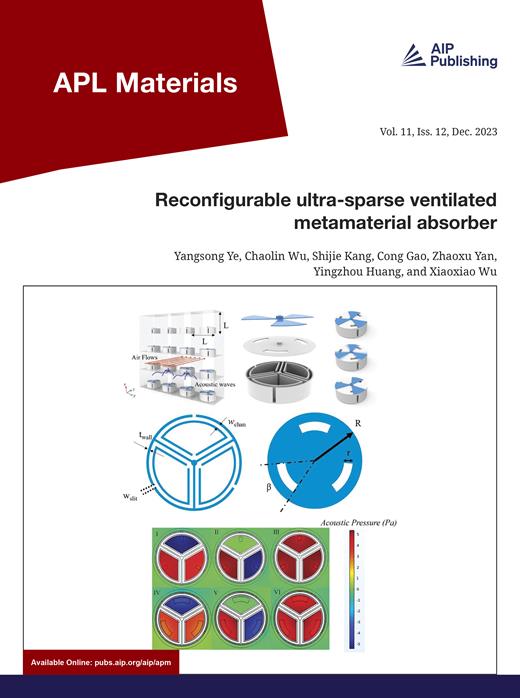A review on device requirements of resistive random access memory (RRAM)-based neuromorphic computing
IF 5.3
2区 材料科学
Q2 MATERIALS SCIENCE, MULTIDISCIPLINARY
引用次数: 0
Abstract
With the arrival of the era of big data, the conventional von Neumann architecture is now insufficient owing to its high latency and energy consumption that originate from its separated computing and memory units. Neuromorphic computing, which imitates biological neurons and processes data through parallel procedures between artificial neurons, is now regarded as a promising solution to address these restrictions. Therefore, a device with analog switching for weight update is required to implement neuromorphic computing. Resistive random access memory (RRAM) devices are one of the most promising candidates owing to their fast-switching speed and scalability. RRAM is a non-volatile memory device and operates via resistance changes in its insulating layer. Many RRAM devices exhibiting exceptional performance have been reported. However, these devices only excel in one property. Devices that exhibit excellent performance in all aspects have been rarely proposed. In this Research Update, we summarize five requirements for RRAM devices and discuss the enhancement methods for each aspect. Finally, we suggest directions for the advancement of neuromorphic electronics.基于电阻性随机存取存储器(RRAM)的神经形态计算的器件要求综述
随着大数据时代的到来,传统的冯·诺依曼架构由于其分离的计算和存储单元带来的高延迟和能耗,现在已经不够了。神经形态计算模仿生物神经元,并通过人工神经元之间的并行程序处理数据,现在被认为是解决这些限制的一个很有前途的解决方案。因此,需要一种具有用于重量更新的模拟切换的设备来实现神经形态计算。电阻式随机存取存储器(RRAM)器件由于其快速的切换速度和可扩展性而成为最有前途的候选者之一。RRAM是一种非易失性存储器件,通过其绝缘层中的电阻变化进行操作。已经报道了许多表现出优异性能的RRAM器件。然而,这些设备只在一个特性上表现出色。很少提出在所有方面都表现出优异性能的器件。在本研究更新中,我们总结了RRAM器件的五个要求,并讨论了每个方面的增强方法。最后,我们提出了神经形态电子学的发展方向。
本文章由计算机程序翻译,如有差异,请以英文原文为准。
求助全文
约1分钟内获得全文
求助全文
来源期刊

APL Materials
NANOSCIENCE & NANOTECHNOLOGYMATERIALS SCIE-MATERIALS SCIENCE, MULTIDISCIPLINARY
CiteScore
9.60
自引率
3.30%
发文量
199
审稿时长
2 months
期刊介绍:
APL Materials features original, experimental research on significant topical issues within the field of materials science. In order to highlight research at the forefront of materials science, emphasis is given to the quality and timeliness of the work. The journal considers theory or calculation when the work is particularly timely and relevant to applications.
In addition to regular articles, the journal also publishes Special Topics, which report on cutting-edge areas in materials science, such as Perovskite Solar Cells, 2D Materials, and Beyond Lithium Ion Batteries.
 求助内容:
求助内容: 应助结果提醒方式:
应助结果提醒方式:


